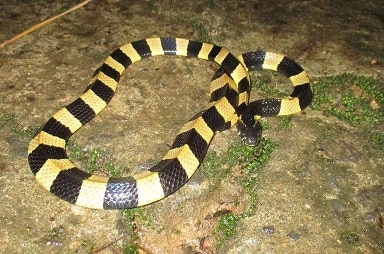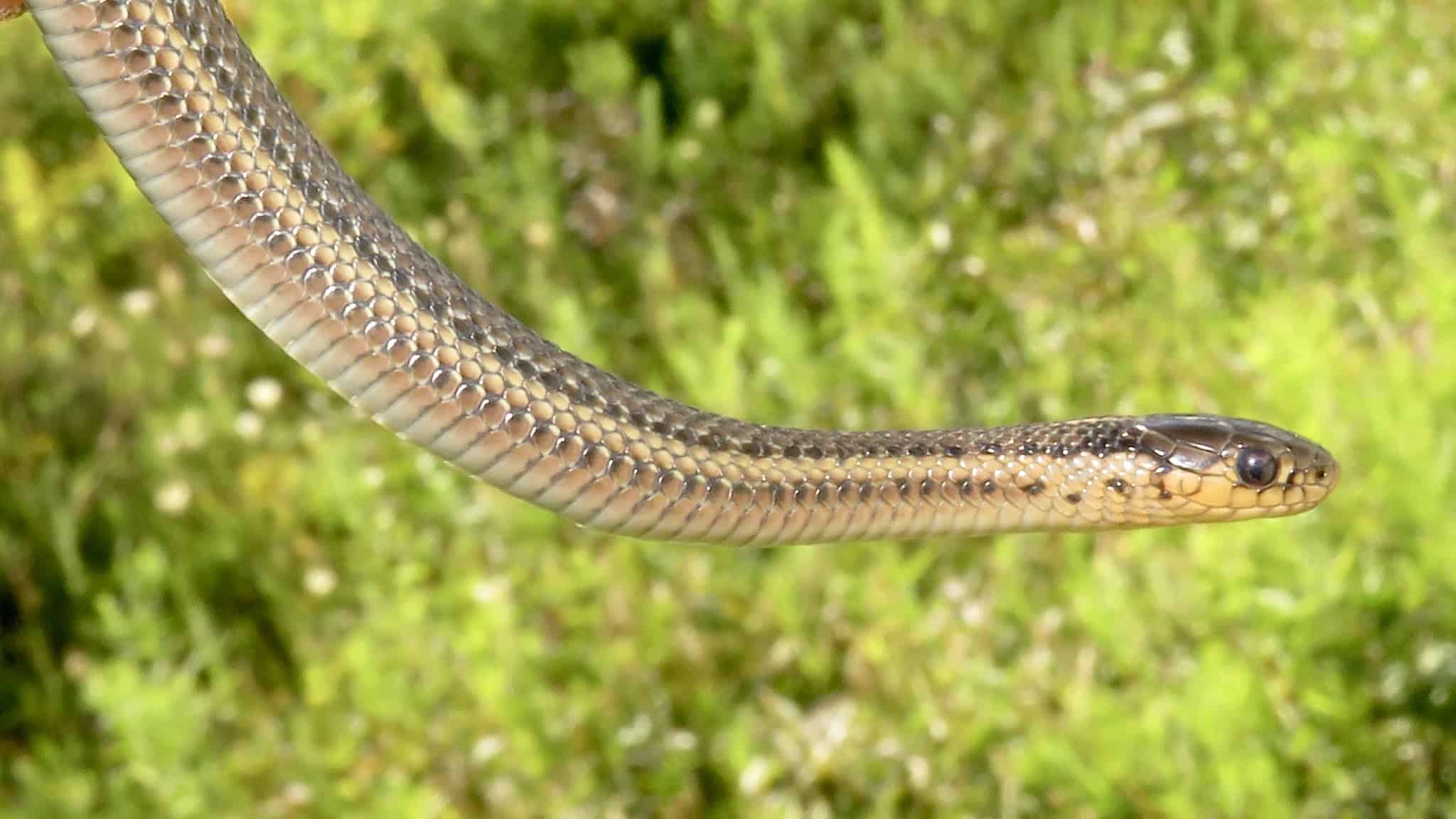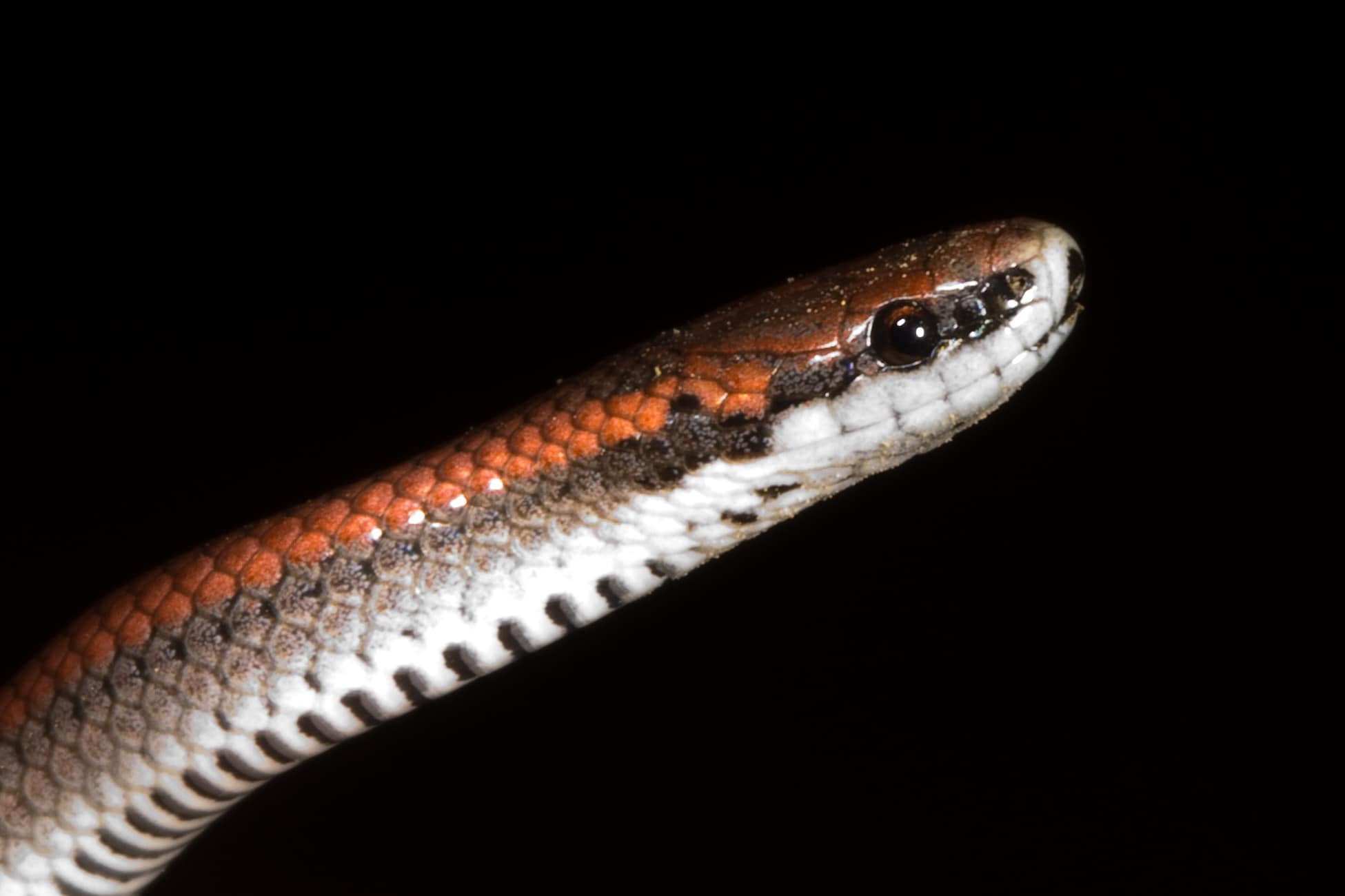| 1 | Mexican lancehead rattlesnake |

A dangerously venomous species of central Mexico, which is more neurotoxic as a hatchling before shifting to a cytotoxin-based venom with age. This rattlesnake loves grassy highlands, and is opposed to forests. They occupy sweeping vistas at altitudes of 1450-2600 metres above sea level. Despite the excellent views, these highlands are more exposed to sharp-eyed birds, and the Mexican lancehead rattlesnake has a solution: hide in burrows.
Ready made mammal burrows dug into soft grass are a favourite, and Mexican lancehead rattlesnakes can vanish into a dark hole as though they never existed. Each sweeping plain could contain several of these rattlesnake burrows. They could even be in photographs taken by tourists without them knowing.
Scientists estimate that Crotalus polystictus would have far lower survival rates if it wasn’t for burrows. Burrowing mammals also form a large chunk of their prey. According to a 2018 study, their diet is 87.9% mammals. Prey include southern pocket gophers and Butler’s pockets gophers, two classic burrowers. The Mexican lancehead rattlesnake’s destiny is closely tied to burrows.
| 2 | Japanese forest ratsnake |

The Japanese forest ratsnake lives on both of Japan’s main islands (Honshu, Hokkaido), but is encountered far less commonly than the Japanese ratsnake species. That’s because it spends a large portion of its life resting in dark mammal burrows, invisible to passing walkers. This has led to the name of Jimuguri or “burrower”, even though it doesn’t forge its own burrows, rather stealing existing ones.
This species (Euprepiophis conspicillata) particularly likes burrows within forests rather than on sweeping grassland. Their diet is mostly mammals, including the small Japanese field mouse, some of which are eaten in the burrow before they lie down and digest for a while.
If you’re lucky, you might see the Japanese forest snake poke its head out of a burrow meekly, checking if the coast is clear. This snake is mostly restricted to Japan, but also appears on the Russian-controlled Kunashir Island. They have a high altitude record, pushing to 3000 metres above sea level.
| 3 | Crossed pitviper |

The crossed pitviper is one of Brazil’s many Bothrops pitviper members, and is the most common in open grassland. They loathe forest, and steer well clear of marshes. A sweeping plain with majestic views is their home, commonly bordered by dusty rural roads.
Like the Mexican lancehead rattlesnake, shelter is a must, and crossed pitvipers find it in the form of vacant mammal burrows. Sometimes these burrows are vacant because their creators have moved on, sometimes it’s because the crossed pitviper has just eaten them.
Crossed pitvipers can enter burrows with tiny entrances, just 10-15cm wide. It’s possible that their eyesight is spectacular, but more likely that they simply seek out scent particle hotspots. Crossed pitvipers are especially lazy, moving as little as 1.2 metres per day. This makes it especially important that they have a comfy hideaway.
Ironically, the predator they fear above all others is the burrowing owl. Not because it likes burrows itself, but because it’s one of South America’s most notorious snake eaters. Crossed pitvipers themselves eat 100% mammals, particularly rats and mice, and occasionally capybaras.
| 4 | African rock python |

The African rock python is one of the largest snakes on Earth, yet they still manage to stuff themselves into hidden mammal burrows. From early European explorers to modern scientists to local wisdom, everyone speaks of the same thing: that African rock pythons love to hide in aardvark burrows above all else. Aardvarks are like a cross between an anteater and a pig, and measure 65kg, so their burrows are suitable for a behemoth like the rock python.
This snake is a constrictor which is able to swallow impalas or even hyenas. The longest on record was 6 metres and rumours persist of 10 metre rock pythons blocking paths. They have no natural predators (except maybe Nile crocodiles), yet still love to hide in burrows, so it’s more likely to escape the oppressive African heat.
Like most of our list, African rock pythons (Python sebae) have no burrowing skills of their own, yet opportunistically take advantage of vacant ones. They might be enormous, yet they’re still thinking constantly about survival, looking for any angle they can. African rock pythons lay their eggs in dark burrows too, and are a rare species to care for them, absorbing warmth in the sunlight and coiling around the eggs to transfer it.
| 5 | Black-headed python |

Unlike the carpet python, the black-headed python lives far away from ordinary Australian folk. Rather than thick undergrowth by a town bus stop, the black-headed python lives in barren, arid areas of Queensland and Northern Territory. There’s no forests to shelter in, maybe the occasional dry bush, so their only hope for shelter is to move underground. Black-headed pythons are nocturnal, and spend a very large portion of their time in burrows.
The black-headed python is a strong burrower itself, but they’re not purists or ideologues. They’ll just as happily grab a premade mammal burrow and curl up in it for several hours. Living in arid landscapes, black-headed pythons get 92% of their calories from reptiles. Burrows are a comfortable place to digest these in peace.
Male on male wrestling is another of their tendencies – the pythons will intertwine their bodies and struggle for dominance, but never bite. They also lay especially large eggs, which in turn create large hatchlings, compared to carpet pythons. With their black head and 2 metre length, it’s hard to misidentify this species.
| 6 | Road guarder |

A venomous snake measuring 120cm which moves by day. This is a central American forest snake which rarely climbs trees. They prefer to move downwards into the safety of vacant burrows, which are one of their main refuges at night.
The threats in the big, bad wild are many, not least their fellow snakes: road guarders are confirmed to be prey for neotropical whipsnakes. Burrows are such a comfy hangout that they’d probably rather not leave at all. They’d rather sit and ponder, but road guarders aren’t like a ball python, which can go 18 months without eating. Sometime or another, they must get their fill of frogs and lizards, their main prey, and leave their cosy burrow in the clear morning to find some promising new scent trails.
Road guarders are common, and live from southern Mexico to Costa Rica. They might die in the teeming Nicaraguan forests they inhabit, but they won’t go down without a fight: they have a dangerous venom, consisting of 55% metalloproteinases. These rarely kill, but tear through skin tissue and sometimes muscle tissue. Confirmed species in their diet include gulf coast toads and Gaumer’s spiny pocket mice.
| 7 | Banded krait |

A severely venomous snake of Thailand, whose bite symptoms begin with a stomach ache and vomiting. This is a neurotoxic snake which normally kills via respiratory failure, as brain signals are interrupted mid-transit. Luckily, deaths are very few, and that’s because banded kraits are much shier than their neighbours like the hyper monocled cobra.
Banded kraits are nocturnal and like to rest calmly in tree trunks or termite mounds by day. Rodent burrows are their favourite, particularly those close to water. Moist but not flooded is a banded krait’s favourite moisture level. Female banded kraits have been observed to share burrows, and lay their eggs in them together; 15 hatchlings were observed leaving this burrow. Banded kraits mainly eat other snakes, so things might not be so harmonious if another species entered the burrow. Prey include sunbeam snakes, oriental ratsnakes and buff-striped keelbacks.
Banded kraits rarely act aggressively during the day, but flip a switch at night and become more willing to strike. During the day, they often hide their head in their coils. They particularly like burrows on the edges of agricultural fields.
| 8 | Butler’s garter snake |

Butler’s garter snake is one of 35 garter snake species in existence and one of 3 to live in Canada. They inhabit Michigan, Wisconsin and Ohio, and prefer moist meadows and woodlands right next to steams. One word predominates in their daily lives: earthworms. Butler’s garter snakes rely on earthworms and slugs for their survival and are constantly flecking their tongue amidst soft mud and luscious grass strands to find them.
When the day’s hard work is done, they retreat to their favourite hideaway, which is a vacant animal burrow. In riverside areas, they particularly love empty crayfish burrows. Here they can guarantee warmth and security, should a sudden cold snap or storm blow in. In crayfish burrows, a Butler’s garter snake can listen to the rain pouring down in the meadow and plot their next move in peace.
Specifically, they can plot how to outcompete those pesky common garter snakes (Thamnophis sirtalis). This is a fully separate species, yet sometimes lives in the exact same moist meadows. The two regularly mingle, without interbreeding. Butler’s garter snake is venomous, but only mildly, not one you need to flee back to your car if you meet.
| 9 | Sharp-tailed snake |

A creature of mulchy forest floors, occasionally below rubbish in people’s back gardens. Sharp-tailed snakes live in the western US: California, Oregon and Washington, plus extreme southeast Canada. They measure just 30cm, and blend into mulchy, leafy forest floors to the extent that they’re very difficult to spot.
Sharp-tailed snakes are already a rare sight in summer. In winter, they’re almost never seen, as the moment the first cold weather strikes, they retreat underground for months. Specifically, they take refuge in subterranean mammal burrows, lurking in a maze of underground tunnels. The forest above their heads goes on as normal, albert frostier than normal.
Sharp-tailed snakes can invade burrows the entire year as well. Their life as a forest floor dweller is perfectly survivable as they eat slugs exclusively, with not even an earthworm detected. They skewer these slugs with their namesake sharp tail, which can also poke your hand painfully if you pick them up. Sharp-tailed snakes are mainly harmless except the occasional stabbing pain. They lack venom and almost never bite. Their love of burrows allows them to escape detection for decades. In 2011, a new colony was discovered on a wooded ridge in Pemberton, Canada. In 2006, the same happened on the San Juan Islands, Washington.
| 10 | Caspian cobra |

According to some lab tests, this species is the deadliest cobra of all. Its LD50 toxicity rating is 0.14mg compared to 0.19mg in an Egyptian cobra. Caspian cobras live in a swathe of rocky, arid territory including eastern Iran, Turkmenistan, Kyrgyzstan and Pakistan. They’re a menace that zooms around dry landscapes searching for mammals determinedly, but no matter how dangerous, Caspian cobras still tire eventually and start longing for a cosy shelter.
Like a Texan dashing for aircon after going out to buy milk, Caspian cobras will retreat to the coolness of a mammal burrow at the end of the day They will sleep and digest their prey, which includes mammals and other snakes such as Hodgson’s ratsnakes.
A confronted Caspian cobra raises 13-22% of its body off the ground and performs the classic cobra hood flare. They produce a piercing hiss, but with a short duration. Instead of a python’s long hiss, Caspian cobras produce multiple brief yet explosive bursts of hissing. Caspian cobras overlap with Indian cobras in the east of their territory.
